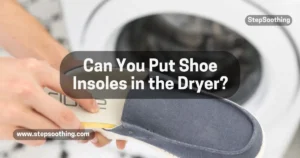Staying comfortable throughout the day requires more than just the right shoes the real difference often lies in the Insoles. Gel insoles, in particular, have emerged as game-changers, designed to reduce shock, absorb impact, and relieve pressure from the feet. Whether walking, running, or jumping, the right Insole can significantly influence the body’s response to motion.
This concept became evident to one cross country coach in 2017, after being introduced to Dr.Scholl’s Massaging Gel Advanced. The Insoles offered such transformative relief that they were described as life changing.
High performing Gel Insoles typically feature triple density, multi layer materials engineered for advanced cushioning. Unlike foam, cork, or leather options, premium Gel substitute Insoles retain their shape and bounce for extended periods, offering consistent energy return, robust foot support, and reduced wear especially on hard surfaces.
Best Gel Insoles for Comfort
Discover the Best Gel Insoles for comfort engineered to absorb shock, reduce fatigue, and provide all-day support for walking, running, or standing. Ideal for work, sports, and everyday wear.
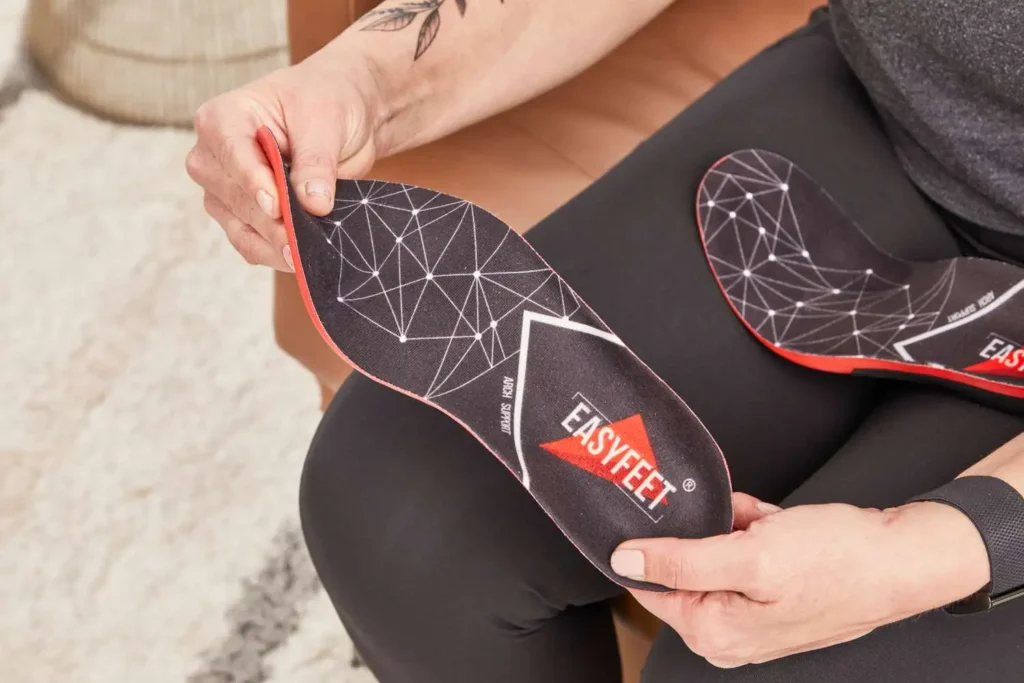
What Defines Comfort in Gel Insoles?
True comfort in Gel Insoles extends beyond softness. It involves evenly distributing impact, particularly during high motion activities. Long periods of standing on hard surfaces, such as concrete, can cause shock to travel from the heel through the legs and into the back. Relief from such strain has been reported with TPR (Thermoplastic Rubber) insoles that support the Achilles tendon and reduce stress on the plantar fascia.
Different activities exert stress on specific foot areas: running impacts the ball of the foot, walking stresses the heel, and prolonged standing challenges the arch. Brands like Spenco address these needs with Insoles featuring targeted gel zones, foam layers, and stability cradles. Customer feedback repeatedly confirms that the right Insole can improve balance, reduce fatigue, and help prevent conditions like shin splints, hammer toes, and heel pain.
Key Features That Improve Gel Insole Comfort
Top-tier insoles combine anti fatigue structures with gel substitute technology and adaptive materials. Renowned brands such as Timberland and Easy Feet have engineered heel and metatarsal areas to endure prolonged standing, making them ideal for workers, students, and frequent travelers.
Advanced materials like Silpure offer antimicrobial protection, reducing odor and friction. PU gel ensures a soft step, while TPE adds resilience. When blended with durable foam, these components provide superior support unlike cheaper foams, which tend to lose their structure within weeks.
Matching Gel Insoles to Foot Type and Activity
Foot shape plays a crucial role in insole selection. Individuals with flat feet, low arches, or overpronation benefit from insoles with structured arch zones to prevent excessive inward rolling. A simple footprint test can help determine the correct insole type.
For individuals with higher body weight or foot conditions such as Morton’s Neuroma or heel spurs, firmer gel zones offer necessary support. Athletes should seek sport-specific or cross-training insoles designed to handle high impact. Manufacturer specifications and verified customer reviews offer more insight than marketing claims.
Best Gel Insoles
Dr. Scholl’s Massaging Gel Advanced Insoles For Standing All Day
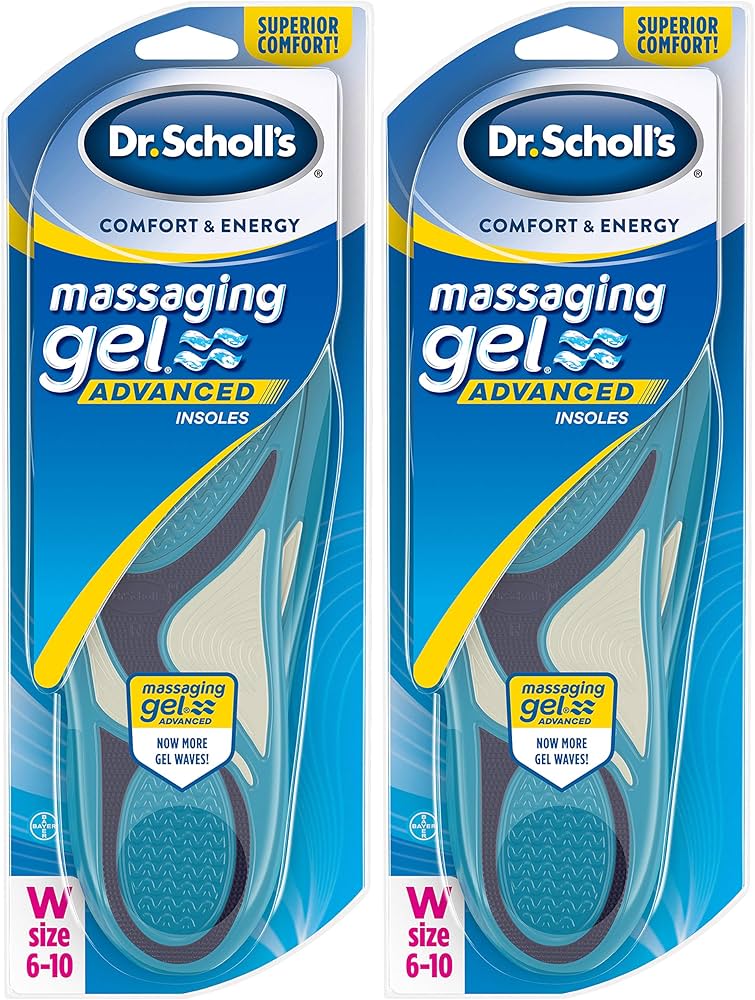
Dr. Scholl’s Massaging Gel Advanced Insoles are an excellent choice for individuals who spend extended hours on their feet. Whether you’re a nurse, warehouse worker, teacher, or retail employee, these insoles are designed to reduce fatigue and discomfort throughout the day. They utilize massaging gel waves that run from the heel to the forefoot, offering consistent shock absorption and energy return with every step. This helps minimize the strain placed on joints and muscles, particularly when walking or standing on hard surfaces.
These Gel Insoles are best suited for neutral arches and fit well in casual shoes, sneakers, and boots. Their durable design ensures long term comfort without flattening over time, which is common with lower-end foam alternatives. Users have reported reduced foot pain and improved posture during extended shifts, making them a reliable, affordable solution for everyday wear. Dr.Scholl’s reputation for comfort and clinical research backs up the effectiveness of this model for all day support.
Superfeet Adapt Run Max Insoles For Running and Sports
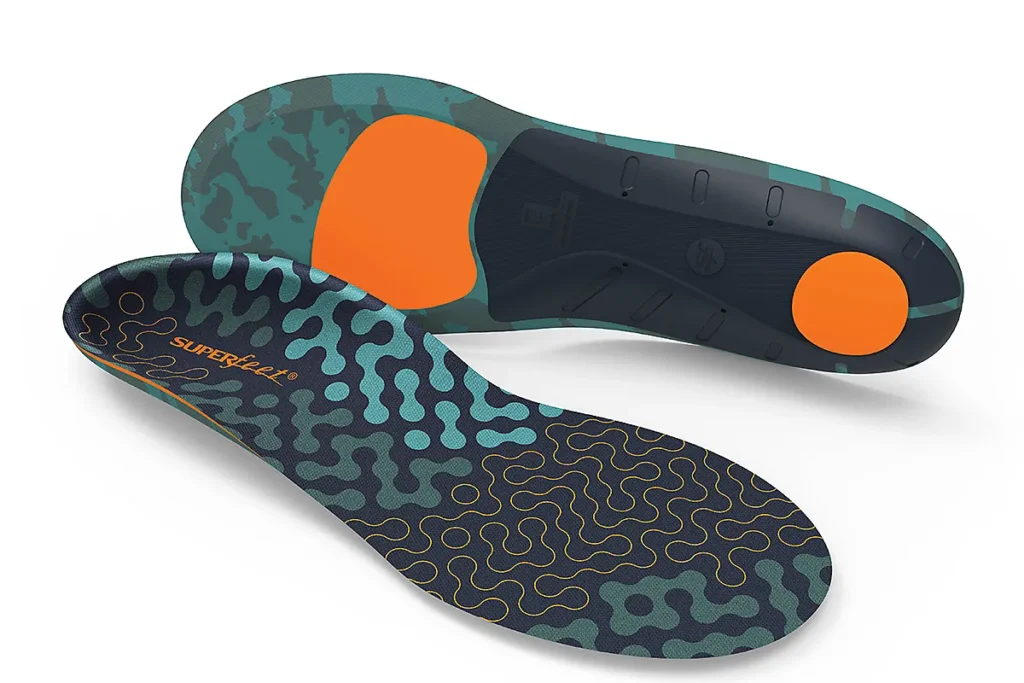
Superfeet Adapt Run Max insoles are built with performance in mind, making them the go to option for runners and athletes. These insoles incorporate medical grade gel in the heel and arch areas, specifically engineered to reduce heel strike impact and provide maximum cushioning during high impact activities. Their adaptive shape helps align the foot properly, reducing the risk of common injuries like plantar fasciitis, shin splints, and Achilles strain.
What sets these gel insoles apart is their energy efficient design, which enhances bounce back and propulsion. Runners will appreciate the improved responsiveness during both short sprints and long distance runs. The arch support is particularly helpful for those with high arches or who overpronate, offering both stability and comfort. Whether you’re training for a marathon or participating in recreational sports, Superfeet Adapt Run Max helps boost performance while protecting your feet from wear and tear.
PowerStep Pinnacle Gel Work Insoles For Work Boots and Heavy Duty Tasks

PowerStep Pinnacle Gel Work insoles are specifically crafted for those in demanding, physically intensive jobs. If you spend your days in construction sites, factories, or other labor intensive environments, these insoles provide the stability and cushioning needed to prevent long term foot and joint damage. Featuring dual density gel, they absorb shock efficiently, while the reinforced stability cradle enhances structural support during movement.
The high arch support is ideal for individuals with flat feet or low arches who need extra assistance maintaining proper foot alignment in rigid work boots. Users report reduced knee and back pain, as well as improved comfort during extended periods of standing or walking on uneven terrain. With a durable build and orthopedic grade design, the PowerStep Pinnacle Gel Work insoles are a valuable upgrade for any heavy duty footwear, helping you stay focused on the job without the distraction of foot pain.
Brison Ball of Foot Gel Pads For Dress Shoes and Narrow Footwear
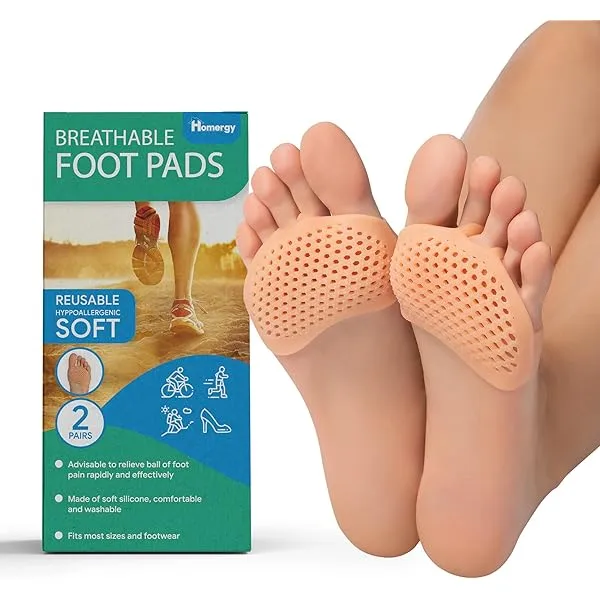
Brison Ball of Foot Gel Pads are designed for style conscious individuals who need discreet, effective cushioning for dress shoes or slim fitting footwear. These metatarsal gel pads target the ball of the foot, a common pressure point in heels and pointed toe shoes. Their compact, slim design allows them to fit into tight spaces without altering the fit of the shoe, offering a practical solution for professionals and formalwear users.
Despite their small size, Brison pads provide excellent shock absorption and reduce friction during long hours of walking or standing. They are ideal for office wear, weddings, or any event that requires both elegance and endurance. Whether you’re wearing pumps, oxfords, or designer boots, these gel pads enhance comfort without compromising style, making them a must-have for anyone looking to balance fashion and foot support.
Gel Insole Comparison
| Use Case | Product Name | Key Feature | Arch Type | Price (USD) | Comfort Score |
| Standing/Walking | Dr. Scholl’s Massaging Gel Advanced | Massaging gel waves | Neutral | $15–30 | 4.7/5 |
| Running/Sports | Superfeet Adapt Run Max | Stabilizing medical gel | High | $35–60 | 4.5/5 |
| Work Boots | PowerStep Pinnacle Gel Work | Dual-density gel + stability cradle | Flat | $30–50 | 4.6/5 |
| Dress Shoes | Brison Ball of Foot Gel Pads | Slim metatarsal gel support | Any | $10–25 | 4.4/5 |
Top Gel Insole Brands for Comfort
Brands such as Dr. Scholl’s, Superfeet, PowerStep, and Spenco have built strong reputations through real-world performance.
- Dr. Scholl’s, for example, uses a responsive wave design that provides long lasting comfort. In post-surgical recovery cases, users reported improved leg support and reduced fatigue using these insoles.
- Superfeet insoles are designed by sports podiatrists and include high density stabilizers.
- PowerStep offers orthotic level design with gel durability, while Spenco’s Comfort Insoles combine TPR and arch support for high activity and travel.
Choosing the Right Size and Fit
Selecting the correct size and fit is essential to maximize the comfort and effectiveness of gel insoles. Most high quality gel insoles are designed in full length formats with trim-to-fit guides, allowing users to cut them to match their shoe size precisely. This flexibility ensures compatibility with various shoe types from athletic sneakers to formal footwear. For shoes with removable factory insoles, it’s best to replace them entirely with the gel version to avoid added bulk. In cases where insoles cannot be removed, thinner gel alternatives are recommended to preserve the shoe’s internal space and fit.
Wearing improperly sized insoles can lead to several issues, including blisters, arch misalignment, and pressure points. Over time, these minor discomforts can develop into more serious foot conditions or affect posture and gait. Ensuring the insole fits snugly inside the shoe without slipping or folding is crucial. It’s also important to consider arch height and foot shape when selecting a model, as a mismatch can negate the benefits of gel cushioning. Taking time to size and fit your insoles properly helps avoid long term strain and enhances daily foot support.
Podiatrist-Recommended Gel Insoles
For those suffering from chronic foot pain or orthopedic issues, podiatrist recommended gel insoles offer medical grade relief. Conditions like plantar fasciitis, heel spurs, and lower back pain often stem from poor foot biomechanics, which quality insoles can help correct. Trusted brands like Superfeet, PowerStep, and Dr. Scholl’s manufacture insoles with specialized features such as structured arch zones, deep heel cups, and shock-absorbing gel compounds. These features support the foot’s natural alignment and help redistribute pressure across key areas.
What distinguishes these insoles is their clinical validation. Many are certified by regulatory bodies like the FDA or CE, giving users confidence in their therapeutic value. Healthcare professionals frequently recommend these products as non invasive treatment options for managing pain and improving mobility. Whether used as a preventative measure or for post-injury recovery, podiatrist approved insoles contribute to a more stable kinetic chain from feet to knees, hips, and lower back making them a wise choice for individuals seeking targeted support and long term comfort.
Durability and Maintenance
Well constructed Gel Insoles typically last six to twelve months depending on usage. Signs of wear include reduced cushioning and energy return. While memory foam insoles degrade faster, gel models retain support longer.
To maintain hygiene and performance, insoles should be hand-washed with mild soap and air dried. Antimicrobial sprays or materials like Silpure help prevent odor and bacterial buildup.
How to Clean Gel Insoles: To maintain hygiene and performance, gel insoles should be hand washed with mild soap and air dried. Avoid machine washing, as it can damage gel layers. Use antimicrobial sprays or look for insoles made with materials like Silpure to combat odor and bacterial buildup. Clean your insoles weekly or whenever they show visible dirt or smell, especially after intense workouts or long days on your feet.
Differences Between Memory Foam and Gel Insoles: While both insole types offer cushioning, gel outperforms memory foam in durability and shock absorption. Memory foam tends to compress over time and may retain heat, whereas gel retains structure and offers better temperature regulation. For those prioritizing long-term foot health and support, gel insoles are often the superior choice in most active or professional settings.
Common Questions About Gel Insoles
Do gel insoles flatten over time?
Lower-quality gel insoles may flatten quickly, but premium models retain their shape and cushioning much longer.
Are they better than memory foam?
Yes, gel insoles provide better shock absorption, durability, and support compared to typical memory foam insoles.
How often should they be replaced?
Replace gel insoles every six months or sooner if they lose cushioning, support, or start feeling uncomfortable.
Can they help with knee or back pain?
Yes, gel insoles reduce joint strain by absorbing impact, which helps relieve knee and lower back pain.
Do they fit all shoes?
Most gel insoles are trim-to-fit, allowing them to be customized for a wide range of footwear styles.



